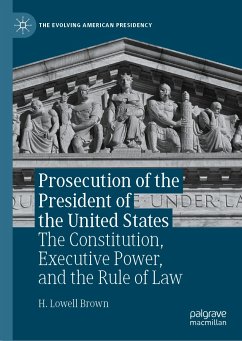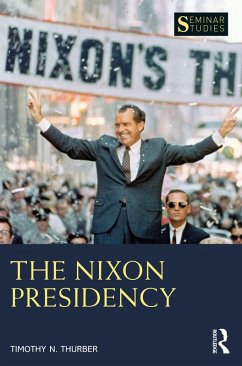
The presidency of Gerald Ford (eBook, PDF)
Versandkostenfrei!
Sofort per Download lieferbar
5,99 €
inkl. MwSt.
Weitere Ausgaben:

PAYBACK Punkte
0 °P sammeln!
Seminar paper from the year 2006 in the subject Politics - Region: USA, grade: 2, University of Wyoming (Political Science), language: English, abstract: Gerald Ford came to the Presidency very surprisingly. Before and after Richard Nixon's resignation following the Watergate affair, he did not have a lot of time to create his own policies or structure his own administration within the White House. Three transition groups were working on the structural preparation for the Presidency, one of them started secretly several months before Ford had to take over the office - just in case. But they we...
Seminar paper from the year 2006 in the subject Politics - Region: USA, grade: 2, University of Wyoming (Political Science), language: English, abstract: Gerald Ford came to the Presidency very surprisingly. Before and after Richard Nixon's resignation following the Watergate affair, he did not have a lot of time to create his own policies or structure his own administration within the White House. Three transition groups were working on the structural preparation for the Presidency, one of them started secretly several months before Ford had to take over the office - just in case. But they were all facing the problem that they did not have the amount of time normally given to a future President between the election and the inauguration to develop a plan for the advisory structure. Ford and his Vice-presidential staff jumped into a running government which was created for the personal needs and around the work style of a President Nixon. They could not fire the whole Nixon staff at the same time without the risk of leading the country into an incapability of action until a new staff system had been built up. And they could not keep all the Nixon people who were loyal to the former President and were probably not able to work the way the new President wanted them to. Ford and his advisers decided to go a middle way which will be analyzed later. This paper will focus on how the advisory structure Ford chose, or was forced to choose, influenced him in his decision making process. The main source will be the biography of John Robert Greene, The Presidency of Gerald R. Ford. The thesis will be that Ford's way to make a decision, as he was used to from his congressional career, did not match with the structure the Presidency forced him to use and led him too often to ineffective decisions.
Dieser Download kann aus rechtlichen Gründen nur mit Rechnungsadresse in A, B, BG, CY, CZ, D, DK, EW, E, FIN, F, GR, HR, H, IRL, I, LT, L, LR, M, NL, PL, P, R, S, SLO, SK ausgeliefert werden.













